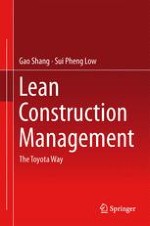2014 | OriginalPaper | Buchkapitel
4. The Toyota Way
verfasst von : Shang Gao, Sui Pheng Low
Erschienen in: Lean Construction Management
Verlag: Springer Singapore
Aktivieren Sie unsere intelligente Suche, um passende Fachinhalte oder Patente zu finden.
Wählen Sie Textabschnitte aus um mit Künstlicher Intelligenz passenden Patente zu finden. powered by
Markieren Sie Textabschnitte, um KI-gestützt weitere passende Inhalte zu finden. powered by
